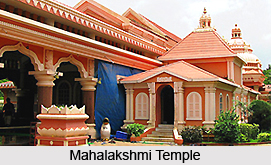 Tourism of Kelshi in Maharashtra deals with the temples and the mosques like Mahalakshmi temple, Utambar hill and Yaqub Baba Darga. There are also few nature tourism spots like the fortification in the lap of nature, Utambar hill, which meets to the Arabina Sea. There lies another prominent tourist attraction in this region is Kelshi Beach. A visit to Kelshi in monsoon is worthwhile.
Tourism of Kelshi in Maharashtra deals with the temples and the mosques like Mahalakshmi temple, Utambar hill and Yaqub Baba Darga. There are also few nature tourism spots like the fortification in the lap of nature, Utambar hill, which meets to the Arabina Sea. There lies another prominent tourist attraction in this region is Kelshi Beach. A visit to Kelshi in monsoon is worthwhile.
Kelshi is the place of perfect weekend in Maharashtra. A trip to Kelshi is a perfect weekend getaway from Pune, Maharashtra to the rustic charm of Konkan Coastal region and its serenity. If one wants to taste the rural life in Konkan, Kelshi is the ideal getaway for him. Kelshi is the place of religious significance, beside it has a long history of medieval era. Kelshi Beach is one of the most beautiful beaches in Dapoli region of Maharashtra, which is not far away from Mumbai, the Capital city of Maharashtra.
Kelshi Beach
Kelshi Beach is located just outside the Kelshi village. It is the lovely beach, which stretches for 2.5 kilometres. The sunsets in Kelshi Beach are lauded to be spectacular.
Kelshi has a long, scenic, unexplored beach. Kelshi Beach is calm and peaceful Beach. The beach in Kelshi is about three kilometres in length. This is ideal for people looking for a break from the maddening city crowds of Mumbai and Pune. Along the coast of Kelshi are thick woods and groves of Kevda and Cyprus, coconut and betel nut. A walk on this beautiful beach listening to the ocean waves is really refreshing. It has an endless treasure of conches, shells and cowries. The large black rocks near the place where the Utambar hill meets the sea are a great place to sit and enjoy the Arabian Sea.
Mahalaxmi Temple
 Mahalaxmi Temple is located at the base of the Utambar hills. It is an enclosed temple in a stone wall fortification. This Swayambhu Mahalakshmi temple was built during the regime of Peshwa times. It also houses the idols of Lord Ganpati and Lord Shiva or Mahadeva. This temple is beautifully built and there is a nearby pond where one can find the beautiful, fully blossomed lotus flowers which are enchanting sight to watch. The sanctum lies beneath two huge domes. One can enter the sanctum through three doors. The dense woods of the Utambar hill form a picturesque background.
Mahalaxmi Temple is located at the base of the Utambar hills. It is an enclosed temple in a stone wall fortification. This Swayambhu Mahalakshmi temple was built during the regime of Peshwa times. It also houses the idols of Lord Ganpati and Lord Shiva or Mahadeva. This temple is beautifully built and there is a nearby pond where one can find the beautiful, fully blossomed lotus flowers which are enchanting sight to watch. The sanctum lies beneath two huge domes. One can enter the sanctum through three doors. The dense woods of the Utambar hill form a picturesque background.
Sand Dunes
One of the main attractions of Kelshi is a naturally formed sand dune due to the Tsunami. It is located on the southern side of the Bharja River. This sand deposit has been accurately dated to September 1524. The experts and archaeologists are carrying out research for samples of ancient culture underneath this dune. Currently the work of constructing the bridge (a part of the Coastal Highway) across the river Bharja is in full swing.
Yaqub Baba Darga
Yaqub Baba Darga is a famous mosque in Kelshi. This famous mosque is located in Kelshi at a distance of about one kilometre from the Mahalakshmi temple. It has a great historical significance. It is about 386 years old. There were many great independent medieval rulers including Emperor Shivaji, Emperor Sambhaji and Thorle Bajirao Peshwa had visited Yaqub Baba to take his blessings.



















